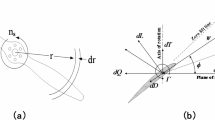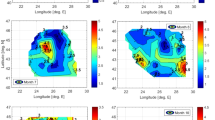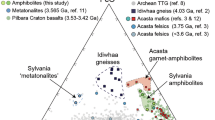Abstract
DURING July 1945, measurements of the intensity of mesotrons passing through 8 cm. of lead at various heights in the Himalayas up to an altitude of 16,800 ft. were made by me and Mela Ram1. During November 1945, I extended these measurements up to 33,000 ft. above sea-level in an aeroplane flight over Lahore. The apparatus used in the flight was the same as that used in the hills. The duration of the flight between 17,000 ft. and 33,000 ft. was one hour and forty minutes. The results are shown in the figure in the form of a curve in which the number of triple coincidences per minute are plotted against the pressure in millibars.
This is a preview of subscription content, access via your institution
Access options
Subscribe to this journal
Receive 51 print issues and online access
$199.00 per year
only $3.90 per issue
Buy this article
- Purchase on SpringerLink
- Instant access to full article PDF
Prices may be subject to local taxes which are calculated during checkout
Similar content being viewed by others
References
Gill, P. S., and Ram, Mela, Indian J. Phys., 19, 71 (1945).
Author information
Authors and Affiliations
Rights and permissions
About this article
Cite this article
GILL, P. Mesotron Intensity as a Function of Altitude. Nature 157, 691 (1946). https://doi.org/10.1038/157691b0
Issue date:
DOI: https://doi.org/10.1038/157691b0



